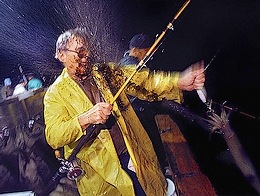 With their backs against the wall due to pollution, and global warming, with estrogen laced runoff blurring sexual identity, and victims of a focused campaign of extermination, are fish forming an insurgency intent on terrestrial Jihad?
With their backs against the wall due to pollution, and global warming, with estrogen laced runoff blurring sexual identity, and victims of a focused campaign of extermination, are fish forming an insurgency intent on terrestrial Jihad?
Reports from across the globe suggest unprecedented levels of tool use among fish, never chronicled in many hundreds of years of observation.
Dolphins in Australia have been observed using tools, and they seem to pass on their specialist knowledge to others. This is the first time cultural transmission has been confirmed in a marine mammal.
While the military is mum on details, recent documents disclosed under the Freedom of Information Act detail the escape of 36 trained “killer” dolphins during Hurricane Katrina, most were wearing uniforms, complete with lethal darts.
Are “killer dolphins” on the loose off the Mississippi coast? And are they a danger to divers and surfers? This is not the first time military-trained dolphins have escaped from their human masters. Up to 20 per cent of navy dolphins are said to escape each year.
A steady increase in trained cadre, a whale-based global communications system, and migratory regiments waiting to take the fight to fresh water. Have fish finally realized it’s us terrestrials that pollute their homes, altering mood and sexual orientation of their children, and the source of stupid triploid slaves who swim in netted enclosures waiting for their turn at the fillet knife?
Considering the ocean floor is littered with unexploded ordinance, is it only a matter of time before some Orca grabs a torpedo and detonates himself in the engine room of the Royal Caribbean?
Earth has nine terrestrial countries that possess nuclear weapons, and two species, fish have 92 known nuclear weapons in their arsenal, perhaps it’s time to dig a fallout shelter, as it’s only a matter of time before fission clouds envelope Asia – the source of so many Japanese seafood internment camps.
Salmon farmers suggest it’s Seals that rend nets and release brigades of recruits into the brine, possibly swelling the ranks of shock troops destined for our estuaries and freshwater impoundments. Quagga and Zebra mussels infiltrate our freshwater supply, while Rock Snot follows to exploit and train Asian Carp, and perhaps Goldfish.
Fishermen have insisted fish are growing smarter with every outing, and while skeptical non-anglers are asleep in their beds, it may only be our “thin green line” that’ll defend the interior.
Hell, with all the wealth of the oceans at their disposal, Sponge Bob could be sending subliminal messages emasculating our children; PETA and the “Sea Kitten” campaign was just the opening gambit in a global war of supremacy.
Can you put a face on the creator of “Catch and Release?”

 Fishermen have always had a love-hate relationship with roads, largely because their presence ensures high traffic, making the fast water home to drunken teenagers throwing rocks, and attracting refuse – beer cans and food containers discarded callously by persons unknown enroute to someplace better.
Fishermen have always had a love-hate relationship with roads, largely because their presence ensures high traffic, making the fast water home to drunken teenagers throwing rocks, and attracting refuse – beer cans and food containers discarded callously by persons unknown enroute to someplace better. I’m not sure that “the little Black dress” is just a girl’s best friend, it’s one of my favorites as well.
I’m not sure that “the little Black dress” is just a girl’s best friend, it’s one of my favorites as well.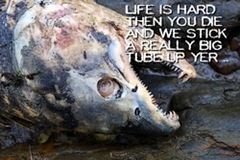 I’ve often heard the lament associated with the decline of the world’s rain forest, how the loss of countless unknown species of flora and fauna may be of enormous impact – as some rare tree frog or rain forest lily may hold the cure for cancer.
I’ve often heard the lament associated with the decline of the world’s rain forest, how the loss of countless unknown species of flora and fauna may be of enormous impact – as some rare tree frog or rain forest lily may hold the cure for cancer.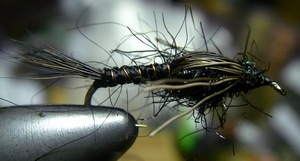
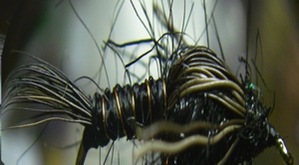 Fish vision is not binocular, they must integrate two separate images of the same scene when looking to the front. There is a gap of missing information between the two images – as fish have eyes mounted on their sides and cannot see what’s in front of their nose.
Fish vision is not binocular, they must integrate two separate images of the same scene when looking to the front. There is a gap of missing information between the two images – as fish have eyes mounted on their sides and cannot see what’s in front of their nose.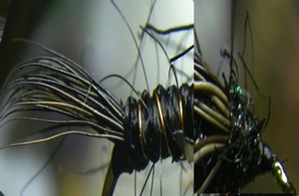 Fish eyes have evolved over many millions of years in a pristine environment, now the Man has “muddied the waters” vision is limited by turbidity, and fish diets are changing –
Fish eyes have evolved over many millions of years in a pristine environment, now the Man has “muddied the waters” vision is limited by turbidity, and fish diets are changing – 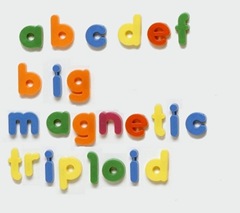 I’m a firm believer in science, I’m also firm in my belief that Walmart will own the technology before the first salmon return successfully…
I’m a firm believer in science, I’m also firm in my belief that Walmart will own the technology before the first salmon return successfully…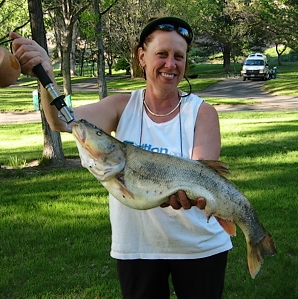 I saw no entry for Sacramento Sucker so if any of you hardened adventurer’s want a shot at a world record, I’ll be happy to show you where they sleep at night.
I saw no entry for Sacramento Sucker so if any of you hardened adventurer’s want a shot at a world record, I’ll be happy to show you where they sleep at night.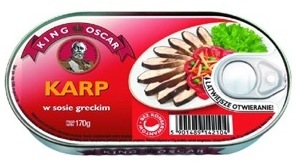 It all sounds wonderful on paper, but I remain unwilling to alter my idea of fine table fare. Farmed fish is a foregone conclusion, but I don’t think
It all sounds wonderful on paper, but I remain unwilling to alter my idea of fine table fare. Farmed fish is a foregone conclusion, but I don’t think